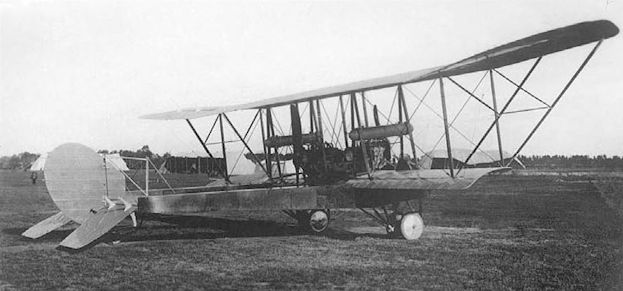М.Маслов Русские самолеты Первой Мировой (Эксмо)
С-19 (РБВЗ С-XIX)
В отношении этого аппарата использовалось также обозначение «Двухвостка». С-19 представлял собой биплан, в центральной части которого размещена тандемная установка двух двигателей «Санбим» 150 л.с. Два коробчатых фюзеляжа соединялись хвостовым оперением. В центре большой руль поворота с роговой компенсацией. Две пилотские кабины в носовой части каждого фюзеляжа. Самолет предполагалось использовать в качестве истребителя. Известно, что самолетов С-19 было изготовлено несколько. По данным историка В.Михеева Сикорский построил четыре С-19 и один из них превратил в трехмоторный, установив над верхним крылом третий «Санбим». Этот аппарат имел бронирование и был вооружен 6 пулеметами, т.к. предполагался к использованию в качестве штурмовика.
Показать полностью
В.Шавров История конструкций самолетов в СССР до 1938 г.
Самолет С-XIX (С-19, "Двухвостка" ) - двухфюзеляжный биплан с тандемной установкой двух двигателей "Санбим" по 150 л. с. на центральной части нижнего крыла с лобовым радиатором, общим для обоих двигателей. Фюзеляжи - четырехгранные, фанерные, с тесной кабиной в носовой части каждого. Стабилизатор лежал на фюзеляжах, два руля высоты были разделены большим рулем направления с роговой компенсацией. Вооружения не было. Назначение самолета было неясным и его летные качества не были определены. Самолет строился по заказу военного ведомства, которое хотело, видимо, воспроизвести какую-то из немецких двухвосток.
Показать полностью
H.Nowarra, G.Duval Russian Civil and Military Aircraft 1884-1969
Igor Sikorski designed another multi-engined aircraft in 1916, two examples of which were built by Russo-Baltic. This was the S.19, powered by two 150 h.p. Sunbeam engines and with a wing structure of similar layout to the ‘Ilya Muromets’ but scaled-down to smaller dimensions, the tail surfaces being carried on twin fabric-covered booms. Probably due to the failings of the Sunbeam engines as experienced on the Lebed XI, the two machines were added to the strength of the ‘Flying Ship Squadron’ as trainers, having been deemed unsuitable for front-line service.
Показать полностью
A.Durkota, T.Darcey, V.Kulikov The Imperial Russian Air Service (Flying Machines)
Igor Ivanovich Sikorsky
Sikorsky S-19 (Twin Tail)
Completed in late 1916, the S-19 was a twin-tailboom biplane, with the lower wings set on top of the boom. The booms extended slightly forward of the lower wing and provided a cockpit position, one for the pilot and the other for the forward-firing gunner. Between the two booms and above the center section of the lower wing, two watercooled 150hp Sunbeam engines were mounted back to back, the front engine drove a tractor propeller while the rear engine drove a pusher. Two large fuel tanks were mounted on struts between the wings. One source suggests this machine was designed as heavy ground-attack aircraft. Very little technical data exists on the S-19. The one prototype built proved disappointing. The aircraft was probably scrapped in early 1917.
Sikorsky Aircraft Data
Model: S-17 S-18 S-19 S-20 S-21 (1st Grand) S-21 (2nd Grand) S-21 (3rd Grand)
Year: 1916 1916 1916 1916 1913 1913 1913
Engine(s) type: 150hp Sunbeam 150hp Sunbeam x2 150hp Sunbeam x2 120hp LeRhone 100hp Argus x2 100hp Argus x4 (2 push/2 trac.) 100hp Argus (tractor)
Length, m: - - 17.1 7.6 20 20 20
Wing Span, m: top/bottom 13.8 16.5/15.3 28 11.6 27/20 27/20 27/20
Wing Area, m2: 43.5 58 - 26.0 120 120 120
Wt. empty, kg: 845 1485 - 395 3000 3400 3500
Wt. fuel/oil, kg: 160 380 - 65 150 250 250
Wt. load, kg: 342 600 - 175 400 600 700
Wt. flying, kg: 1190 2100 - 570 3400 4000 4200
Wingload, kg/m2: 26.7 36.2 - 33.5 28.5 33 35
Powerload, kg/hp: 8.5 7 - 10 18 11 11.5
Speed, km/h: - - 115 190 80 90 90
Показать полностью





